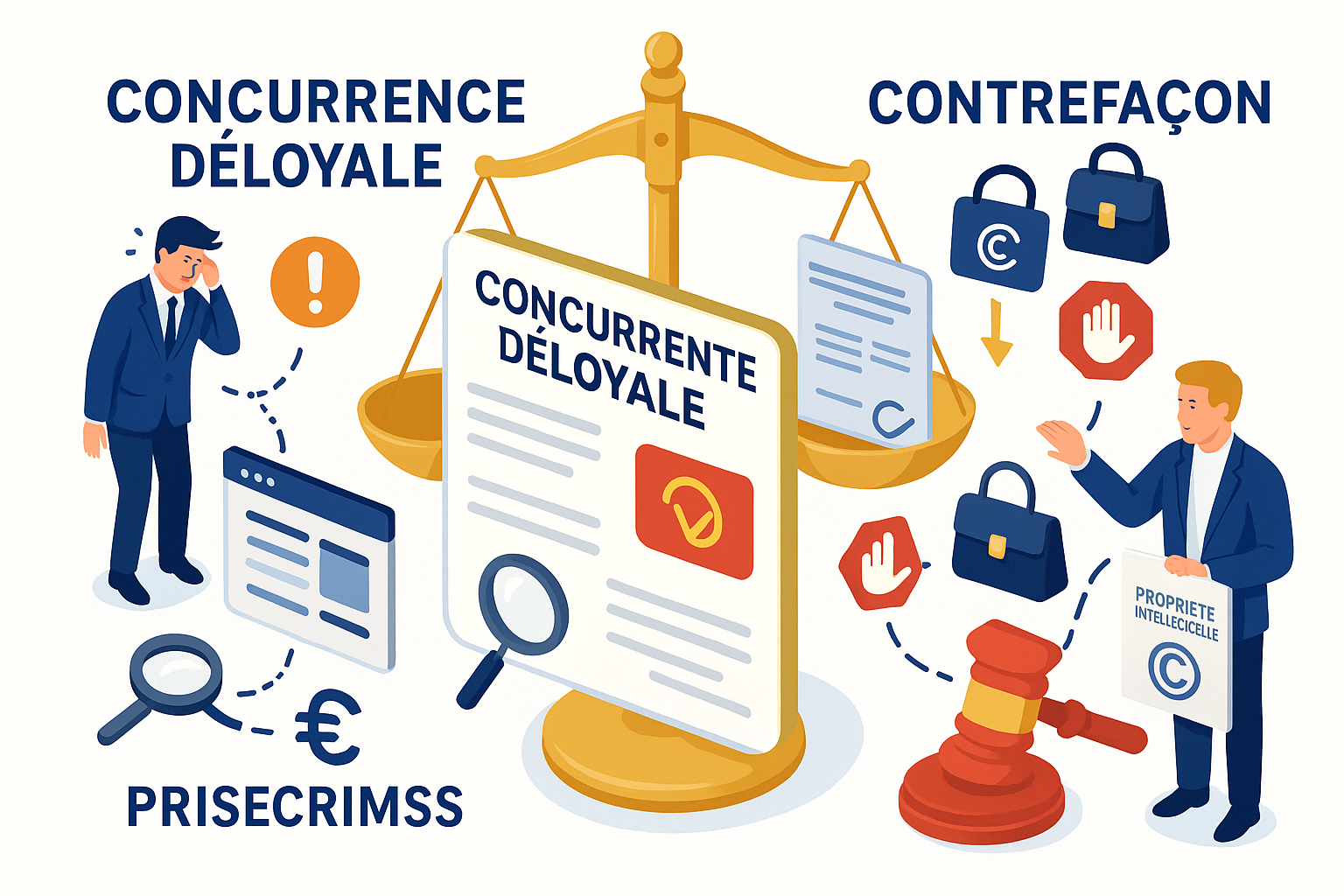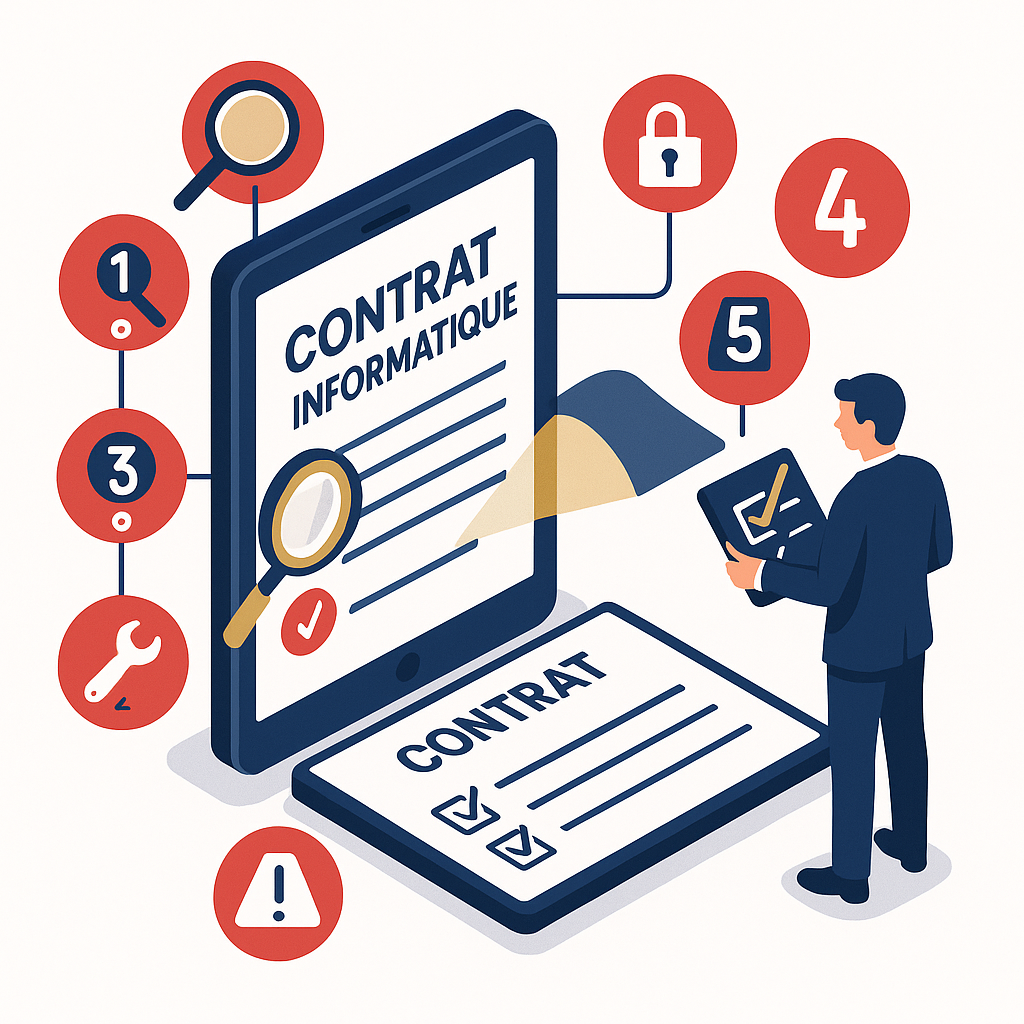What are the legal steps involved in creating a website?
Step 1: Define your project
Before you start creating your site, you need to clearly define your project.
What is the purpose of your site?
Who is your target audience?
What type of content do you want to publish?
These questions will help you determine the needs of your website.
Step 2: Choosing a domain name
The domain name is the web address visitors use to access your site.
Choose a domain name that is easy to remember, relevant to your content and reinforces your brand image.
To secure your domain name, especially if you own a trademark, you may benefit from registering with a trademark alert service. This service alerts you if a domain similar to your trademark is registered, and offers priority registration for various extensions (.online, .store, .bio etc.). Some providers offer additional services such as domain recovery.
The domain name is similar to a trade name and enjoys legal protection in France against unfair competition.
For .fr domains, the Association française pour le nommage Internet en coopération (AFNIC) offers out-of-court dispute resolution, avoiding the need to go before a judge.
Step 3: Choose a web host
A web host is a company that stores your website files on its servers.
Choose a reliable web host with a good reputation, good customer service and hosting plans tailored to your needs.
If you use a hosting company, you'll probably have to negotiate a hosting contract , which is an agreement between an Internet service provider and a customer for the storage of data on a server and its accessibility on the Internet.
In particular, it will be advisable to ensure the presence of clauses specifying the purpose of the contract, the obligations of each party, the price, intellectual property rights, the duration of the contract, responsibilities, the possibility of subcontracting, data transfer, security measures and confidentiality.
The host is obliged to provide a storage platform, maintain the server, ensure the proper functioning of the devices used and provide technical support. The customer, for his part, must provide the necessary information, cooperate with the host and, if the contract is remunerated, pay the agreed price.
Step 4: Choose a website creation platform
There are many platforms for creating websites, also known as CMS (Content Management System), such as WordPress, Wix, Shopify or Magento.
Each has its advantages and disadvantages, and you'll need to choose the one that best suits your needs.
Step 5: Design your site
Designing your site includes choosing a design, creating an intuitive navigation structure, and creating pages and sections. You also need to ensure that your site is responsive, meaning that it adapts to all types of screens (computers, tablets, smartphones).
If you're using a service provider to create your website, it's crucial to draw up a website creation contract. This document will define the responsibilities of each party, specify the specifications and establish a method for delivering the source code.
Such a contract provides legal certainty for all parties involved. It clarifies expectations, avoids misunderstandings and prevents potential disputes. By clearly defining each party's responsibility, you can ensure that both parties understand their obligations and rights.
The specifications are a key element of the contract. It describes in detail the functionalities and features of the website to be created, as well as the associated deadlines and costs. This transparency ensures that both parties are on the same wavelength regarding the project.
Finally, the contract must specify the method of source code delivery. As a customer, you need access to your website's source code, as this gives you the freedom to make changes or change providers in the future if necessary.
In short, a website design contract is an essential tool to ensure that your website project runs smoothly. Be sure to include all the important details to protect your interests and those of your service provider.
Step 6: Create your content
Your site's content is what will bring value to your visitors. It must be high-quality, interesting and relevant.
In addition, it must be SEO-friendly to help your site be found on search engines.
When creating content, it's important to respect copyright and intellectual property rights. Copying text or images without permission can be a legal offence. So make sure you obtain the necessary permissions or create original content to avoid any disputes.
Step 7: Optimize your site for SEO
SEO is the art of optimizing your site so that it appears at the top of search results.
This includes using relevant keywords, optimizing your titles and meta descriptions, and creating internal and external links.
Step 8: Ensure the security of your site
It's crucial to protect your site and your users' information.
Be sure to use an HTTPS protocol for secure browsing, and consider installing security plugins to protect your site from malicious attacks. A regular backup of your site is also a good practice to prevent any data loss.
This mission can be carried out by your website host.
Step 9: Test your site
Before launching your site, take the time to test it.
Check that all links work, that forms send correctly and that the site displays well on different devices and browsers.
Step 10: Include the necessary legal content
When creating a website, it is important to respect certain legal obligations.
In particular, you need to include a privacy policy that explains how you collect, use and share your users' personal data.
To learn more about the privacy policy, I invite you to take the following article: "Privacy policy: everything you need to know!"
Legal notices are also mandatory, and must provide information on the identity of the site owner and the conditions of use of the site.
To find out more about legal notices, I invite you to take a look at the following article: "Legal notices for your e-commerce site!"
Finally, if you use cookies, you must inform your users and obtain their consent.
To learn more about the cookie policy, I invite you to take the following article: "Cookie policy - Deciphering Cookies and the RGPD: Answers to your common questions"
In addition, if you sell goods and services to consumers, you'll need to make your GTCs directly accessible on the website.
To find out more about GTCs, I invite you to take a look at the following article: "General terms and conditions of sale for companies selling products or services online: everything you need to know!"
Step 11: Launch your site
Once everything is in place and you've tested your site, it's time to launch it.
Announce the launch on your social networks, in your newsletter and through any other communication channel you use to reach your audience.
Step 12: Maintain and update your site
After the launch, the maintenance of your site isn't over. You'll need to continue publishing quality content, updating your site and analyzing your traffic to improve it.
Inshort, creating a website is a complex process that requires planning, creativity and technical skills. However, by following these steps, you'll be able to create an effective and attractive website that meets your needs and those of your users.
Ready to turn your idea into reality with an impactful website? I have the skills and experience to support you every step of the way. Contact me today to begin our journey together to online success!




